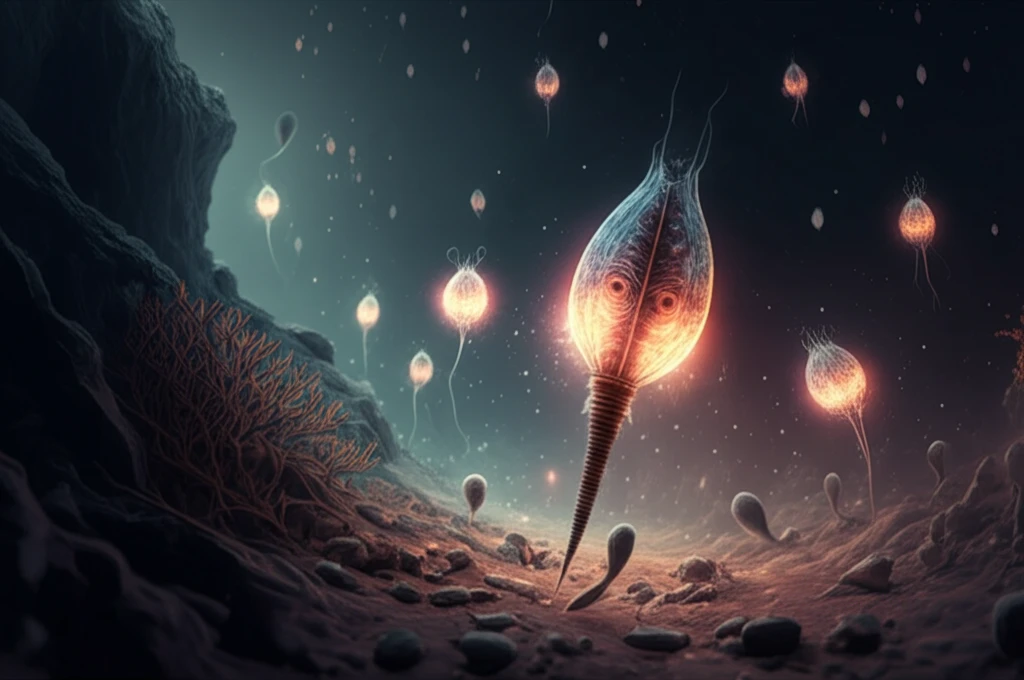
Ancient Sea Creatures Shed Light on Vertebrate Evolution
"Fossil discoveries in Greenland reveal new insights into the origins of paraconodonts and early vertebrate development."
The quest to understand the origins of vertebrates has long captivated scientists, with key discoveries continually reshaping our understanding. One pivotal moment was the unearthing of the conodont animal in Carboniferous Scotland in 1983. This discovery sparked intense discussion about the relationship between conodonts and early vertebrates, focusing primarily on euconodonts—the most studied group among protoconodonts, paraconodonts, and euconodonts.
Distinguished mainly by their Cambrian origins, these groups were initially categorized by Bengtson in 1983. While protoconodonts have been linked to chaetognaths, the theory that euconodonts evolved from paraconodonts has driven extensive research into the elemental structure of conodonts. A recent study highlighted similarities between the enamel of euconodont elements and vertebrate enamel, suggesting evolutionary convergence rather than direct homology. Nevertheless, conodonts are still considered vertebrates, largely due to their soft tissue anatomy, a stance upheld despite some objections.
Now, microscopic, coiled sclerites from the early Cambrian period are challenging previous assumptions. These fossils, while not overtly similar to typical conodont elements, exhibit a unique growth pattern comparable to some Cambrian paraconodonts. This comparison may extend the early vertebrate evolution model proposed by Murdock et al. (2013) further back into the early Cambrian period.
What Are Tarimspira and Why Do They Matter?

The Cambrian sclerites in question have been identified as belonging to the genus Tarimspira, first described by Yue and Gao in 1992. The type species, Tarimspira plana, originates from the lower Cambrian of western China. This species is notable for its tightly coiled, planispiral form. Initially, Yue and Gao compared its shape to bellerophontiform mollusks, noting a superficial resemblance to macromolluskan shells. However, a closer examination reveals that Tarimspira’s method of shell accretion is distinct, reflecting logarithmic growth.
- Unique Morphology: Tarimspira exhibits tightly coiled structures without the basal cavity seen in later paraconodonts.
- Basal Accretion: Sclerites grow through the addition of external layers, similar to paraconodonts but without the cavity formation.
- Extended Range: The discovery in North Greenland significantly expands the known habitat of Tarimspira.
What Does This Mean for Understanding Early Vertebrates?
The distinctive style of basal accretion observed in Tarimspira, coupled with lateral overlaps, invites comparison with paraconodonts. However, significant differences in overall morphology suggest that the arrangement and function of their respective hard parts varied considerably. The absence of a basal cavity in Tarimspira, a hallmark of paraconodonts like Furnishina, Prooneotodus, and Problematoconites, poses an evolutionary question: Are Tarimspira sclerites early ontogenetic stages of paraconodonts, or do they represent a separate evolutionary path?
